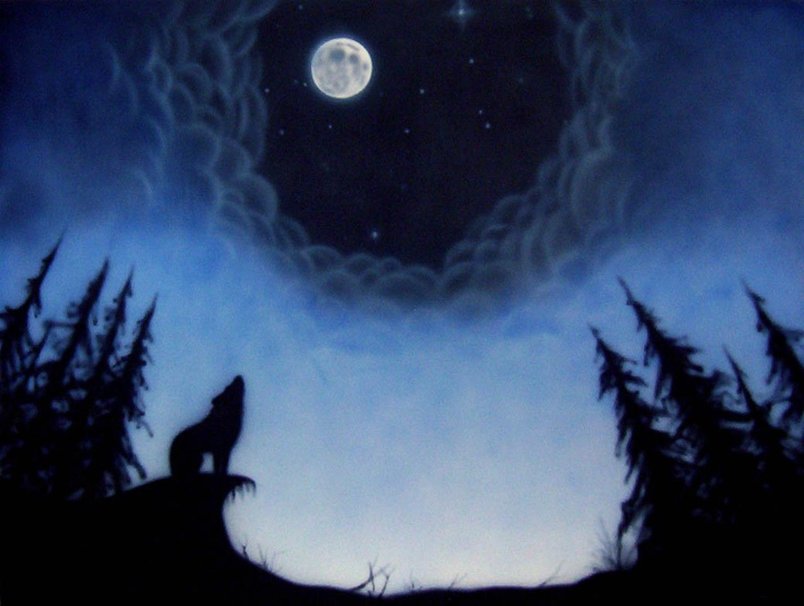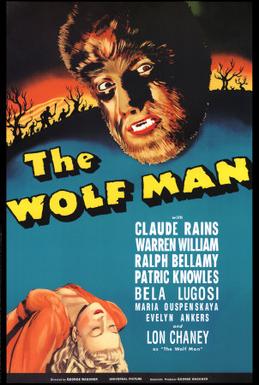
While undead creatures like zombies and vampires seem to go in and out of style, werewolves are always in vogue. 1980s pop culture gave us some fantastic werewolves in film: The Howling (1980), An American Werewolf in London (1981), The Company of Wolves (1984), Teen Wolf (1985), and, of course, the renowned music video for Michael Jackson’s “Thriller” (1983). Yet, the 1980s werewolf trend is not a singular phenomenon. More recently, if we are talking film and television programs alone, werewolves have featured in countless popular programs from the 2000s: Harry Potter, Underworld, Twilight, True Blood, Bitten, and Hemlock Grove—just to name a few.

And what is perhaps most interesting about this ever-present trend is how varied these werewolves are: some are born werewolves; some are bitten werewolves; some are sensitive to silver; some can induce their change; some change involuntarily; some are suave; some are ragged, etc. So, where do artists draw their inspiration? How do they decide what the werewolf will look like and how they will behave?
Roughly every culture in the world has their own werewolf mythology. While it would be impossible to discuss each one in a single post, let’s revisit some of the myth and folklore surrounding werewolves—legends and beliefs that continue to permeate our favorite pop culture werewolf incarnations today.
One Medical Condition*
Lycanthropy is an actual medical condition. True to what the name means—a combination of the Greek terms lykoi (wolf) and anthropos (man)—a person is diagnosed with lycanthropy when they believe that they are an animal.
Two Early Written Werewolf Accounts*

- Herodotus in 440 BCE wrote about a group of werewolves in Scythia. These “people” would annually shapeshift into wolves.
- Around 1 BCE, Ovid wrote a story about King Lycaeon, who received a visit by Zeus. Not convinced that his visitor was actually Zeus, Lycaeon—thinking that if he was really Zeus, he would see through the trick—served him human flesh. Zeus did not respond favorably. He cursed Lycaeon, turning him into a werewolf (a flesh-eater).
Three Major Differences Between Poplore and Folklore*
- If you were to ask someone how to become a werewolf, most would say you have to be bitten. Interestingly enough, this “bitten” narrative is not found anywhere in European folklore about werewolves. So how did people become werewolves? The common threads are: 1) pact with the Devil/pagan deity; 2) wearing a wolfskin; 3) drinking an herbal potion; 4) “drinking water from the footprint of a wolf.” Another belief is that one can become a werewolf after eating human flesh.
- While today we associate a full moon with werewolves, this hasn’t always been the case. Most folklore accounts depict werewolves as capable of inducing the change themselves—regardless of a full moon.
- Although now most people associate silver with protection from werewolves, this was not a part of the early lore. Since being a werewolf was associated with devil worship/aberrant behavior, exorcism was a go-to remedy.
Four* “True” Werewolves*
- Peter Stumpp (1525-1589): A German man who was accused of murder, rape, and cannibalism. Supposedly, he wore a wolf pelt and practiced black magic. He is known as the “Werewolf of Bedburg.”
- Michel Verdun (d. 1521): A French man who was accused of murder, cannibalism, and black
 magic. Allegedly, he admitted to being a werewolf after an incident with a traveler. The traveler injured a wolf, followed the blood trail, and found Michel with a similar wound. Michel is known as the “Werewolf of Poligny.”
magic. Allegedly, he admitted to being a werewolf after an incident with a traveler. The traveler injured a wolf, followed the blood trail, and found Michel with a similar wound. Michel is known as the “Werewolf of Poligny.”
- Claudia Gaillard (d. 15th century): A French woman who was accused of being a werewolf. Although there was no actual evidence, Claudia was supposedly seen mid-shift. The “Werewolf of Burgundy” was burned at the stake.
- Demon Tailor (d. 1598): A French man who was accused of murder, cannibalism, pedophilia, and necrophilia—to name a few. This man was so evil that all records surrounding his existence and trial were supposedly destroyed (this is why we don’t know his real name) but his memory has lived on. The “Werewolf of Châlons” supposedly took the form of a wolf in order to lure his young victims.
Five Ways to Spot a Werewolf*
This list is intended to be humorous, but here are a few of my favorites:
- Unibrow
- Hair on inside of skin
- Invisible “x” symbol on body
- Abnormally long index finger
- Obsession with cemeteries
 Now, go satisfy your fascination for these marvelous creatures by re-visiting a werewolf film classic: The Wolf Man (1941). Fun fact about this classic: “The Wolf Man was the first film to utilize the silver bullet myth on-screen.” And with that, may each decade continue to give us new, folklore-inspired takes on the werewolf. Happy Halloween!
Now, go satisfy your fascination for these marvelous creatures by re-visiting a werewolf film classic: The Wolf Man (1941). Fun fact about this classic: “The Wolf Man was the first film to utilize the silver bullet myth on-screen.” And with that, may each decade continue to give us new, folklore-inspired takes on the werewolf. Happy Halloween!
(*There are many more!)

![[OPINION] IRONDAD AND SPIDER-SON: AN OBSESSION](https://geekd-out.com/wp-content/uploads/2019/06/Irondad-and-Spider-son-2-150x150.jpg)

